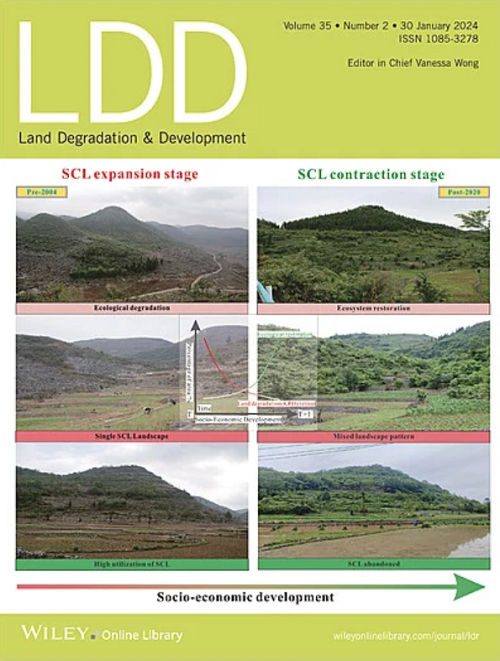Soil Erosion Rates Via 210Pbex, 137Cs and USLE Model in El Rmel Watershed, NE Tunisia
IF 3.6
2区 农林科学
Q2 ENVIRONMENTAL SCIENCES
引用次数: 0
Abstract
Soil erosion is a severe environmental and agricultural phenomenon which can be accelerated with climate change and land use, particularly in the Mediterranean region. In Tunisia, studies on the spatial distribution of erosion and deposition patterns can help to effectively implement soil and water conservation practices. Accordingly, the main objective of this research was to estimate soil erosion rates in two cultivated soils (SE1 and SE2), at El Rmel watershed of northeastern Tunisia. Three different time scales were observed via three tools, the 137Cs, the 210Pbex radioisotopes and the USLE model. The FRN's conversion mass balance model 2 (MBM2) was used to convert activities into erosion rates. Based on the 137Cs, 210Pbex, and USLE model, the mean erosion rates were, respectively, 37, 52, and 33 t ha−1 year−1, at the cereal cultivated SE1 site and 4, 9, and 6 t ha−1 year−1, at the olive tree cultivated SE2 site. It is supposed that the difference in time scale expressed by the three methods (100 years by 210Pbex, 60 years by 137Cs, and 40 years by USLE), may have had a notable impact on the discrepancy in estimated erosion rates. The mean farm slope for SE1 and SE2 were, respectively, 14% and 8% and tillage was through three operations per year. Furthermore, the cereal crops site characterized by steep slopes show much higher erosion rates. Consequently, planting olive trees will be very helpful in reducing soil erosion and will be of great impact either environmentally and/or economically.求助全文
约1分钟内获得全文
求助全文
来源期刊

Land Degradation & Development
农林科学-环境科学
CiteScore
7.70
自引率
8.50%
发文量
379
审稿时长
5.5 months
期刊介绍:
Land Degradation & Development is an international journal which seeks to promote rational study of the recognition, monitoring, control and rehabilitation of degradation in terrestrial environments. The journal focuses on:
- what land degradation is;
- what causes land degradation;
- the impacts of land degradation
- the scale of land degradation;
- the history, current status or future trends of land degradation;
- avoidance, mitigation and control of land degradation;
- remedial actions to rehabilitate or restore degraded land;
- sustainable land management.
 求助内容:
求助内容: 应助结果提醒方式:
应助结果提醒方式:


